Rome Newsroom, Sep 1, 2024 / 06:00 am
As Pope Francis prepares to visit Indonesia, the founding superior of a monastery in Java shares what life is like for Catholics in a majority-Muslim country.
When Sister Martha Driscoll and nine other Cistercian nuns landed on the Indonesian island of Java in 1987, they were welcomed by the local Catholic and Muslim communities — and by some neighborhood reptiles.
The sisters’ new monastery was still under construction in the foothills of one of the east Asian island’s many volcanoes, nestled in the Indonesian rainforest just over half a mile from the nearest village.
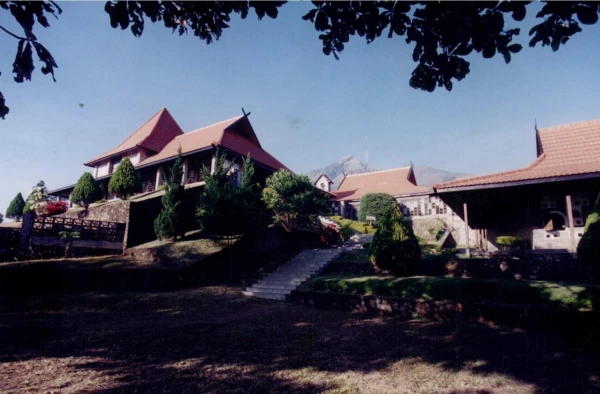
It wasn’t long before Sister Martha, founding superior of the Monastery of Gedono, had to call in a local expert on wildlife to teach her and the other sisters how to safely handle the snakes, some of them venomous, that sometimes found their way into the monastery.
“Not one of us got bitten,” Sister Martha affirmed. “We have many stories, many stories, but God is good and the Blessed Mother keeps us safe from all the snakes — she’s got her foot on them.”
Immersed in green fauna, the monastery complex of stone buildings with red, tiled roofs are built into the foothills of a dormant stratovolcano in the center of the island. A 5,000-foot-high saddle connects Mount Merbabu to Mount Merapi, an active volcano close enough for the sisters to smell the ashy smoke and sulfur when it erupts.
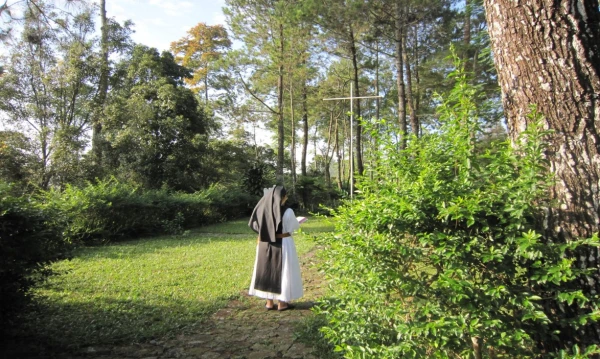
Sister Martha said the country’s tropical climate means hot temperatures year-round, though up in the hills, where the Gedono monastery lies, it stays in the low 70 degrees Fahrenheit or even colder.
Pope Francis will visit Indonesia’s capital and largest city of Jakarta, also on the island of Java, in the first days of September, just after the end of the country’s driest month and before the start of the rainy season. It will be the pope’s first stop during a trip that will see him also traveling to Papua New Guinea, Singapore, and East Timor.
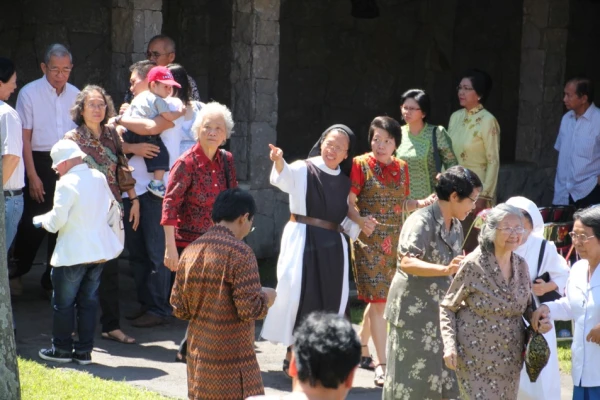
Life in Muslim Indonesia
Muslim-Christian relations will be a major theme of Pope Francis’ trip to Indonesia, where approximately 87% of the population is Muslim. Christians make up just 3% of the country’s total population.
However, Sister Martha said the Trappist community lives in peace and friendship with the local Muslims.
The center of the day, she emphasized, is Mass. Then the Cistercian sisters gather to pray the Divine Office — also called the Liturgy of the Hours — seven times a day, starting before dawn and ending at 7:30 p.m.
Their time is also filled with prayer and spiritual reading, alternating with household chores and the reception of guests. The nuns work hard to earn their living: caring for the vegetable garden and clove plantation, and making cookies, kefir, and jams. The monastery’s newest source of income is selling roasted chicken dinners online.
(Story continues below)
The Gedono monastery has a guesthouse for priests, religious, and laypeople who come for a few days or a week of solitude and prayer. As many as 200 or 300 people attend Sunday Mass at the monastery, staying to listen to a talk on prayer or vocation afterward.
Sister Martha said the community doesn’t do “anything specifically interreligious,” though they often celebrate the end of Ramadan with their workers and their families, “asking each other forgiveness for anything that happened during the year, feasting and giving thanks to the Lord together. There would be a Muslim who prayed, and I prayed.”
The sister said she also had “Muslim spiritual sons, who are still Muslims but they come to the monastery. They are deeply moved when I speak of forgiveness, something that is lacking in normal Muslim practice. A number of Muslim figures have come just to pray and to spend the night. Not to have formal discussions — just to be friends.”
“That’s a side of Muslim life that many people in the West don’t realize,” she said, adding that Muslims in Indonesia can show the world what it is like to live in harmony with a minority.

Sister Martha noted that while she and the Gedono Monastery have experienced peaceful collaboration with their nearby Muslim brothers and sisters, that does not mean there aren’t some problems or difficulties.
“To build a church, you have to have the agreement of the people in the village or in the zone and that can be sticky,” and in a few areas of the country there is less overall harmony between Muslims and other religious groups, she explained.
Overall, the nun said, in Indonesia, “life is much simpler, slower, more human.”
“I have found that the Muslim people and the Muslim religion has very good human education for its people,” she noted. “There’s a sense of God, there’s a sense of duty, there’s a sense of family and a village life that’s very strong.”
The Church, too, in Indonesia is “not so institutional; it’s more family,” she added. In Indonesia, “I learned a lot about what my feminine way of thinking was. We learned to think together as women and found that it was very close to the Asian way of thinking.”
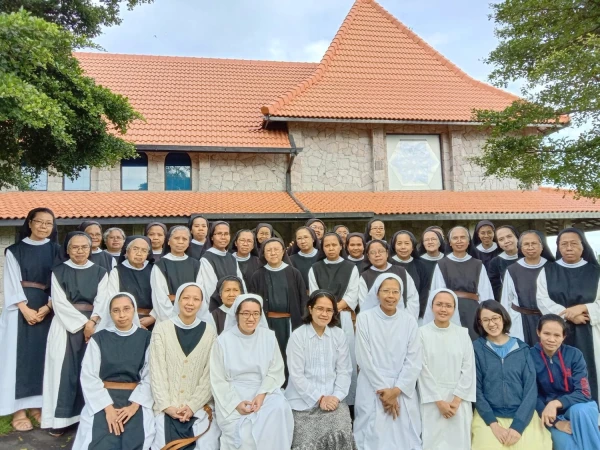
Back in Rome
After 34 years in the majority Muslim country, the U.S.-born Sister Martha said Indonesia is home: The octogenarian speaks Indonesian and has Indonesian citizenship.
After the Gedono community was started in 1987 as a foundation of the Trappist monastery of Vitorchiano in Italy, it became an autonomous priory in 1994 and finally an abbey in 2000, led by Sister Martha (called “Mother Martha”) as abbess. The community grew from 10 nuns to around 40 in 2011. The number lowered when some of the sisters were sent off to start a new community in Macau (a special administrative region of China) though it is now at 40 members again.
Three years ago, after resigning as abbess, Sister Martha was asked to return to Italy to support the community of Trappist monks of Tre Fontane Abbey, built on the site of St. Paul’s martyrdom. Since April 2021, she has led the small community of Trappist nuns who are assisting the aging male community in revitalizing the monastery founded 900 years ago by St. Bernard in southern Rome.
While Sister Martha expressed a wish to see Indonesia again, she said “there’s no putting dates on” her time in Italy. “We are here and we’re just trying to let God do what he wants to do with and through us here.”
Being in Rome has also allowed the cloistered nun to share her wisdom with a new audience in an unexpected place — the Vatican.
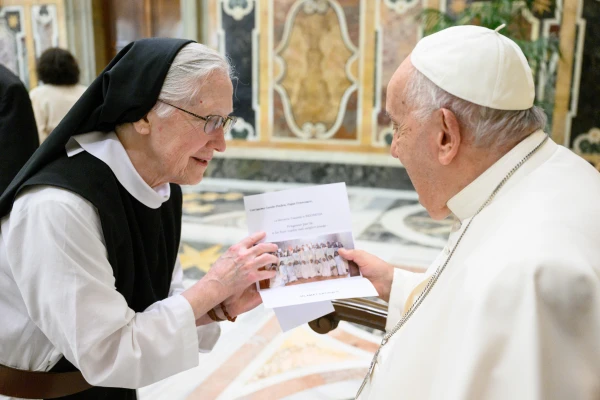
The abbess was asked by the Dicastery for Clergy to speak in February to about 800 priests and bishops in charge of formation at the International Conference for the Permanent Formation of Priests and in June at a meeting of all the dicastery’s members.
“I had some experience accompanying priests in Indonesia,” she said, explaining that the topic of her talk was what priests can gain from contact with a monastery.
“Why should there be a relationship between diocesan priests and cloistered nuns? Because we are all called to center our lives on Jesus in a radical way, in and through the Eucharist,” she said. “Sometimes the nuns know more about living that mystery because it seems priests don’t have time to meditate on it enough.”
She also feels that the formation of priests has become too abstract and intellectual, with not enough focus on human formation, community life, and a personal relationship with Jesus.
“This,” she explained, “can lead to a lack of self-knowledge, which you learn in community life and in living the mystery of the Church as the body of Christ, building up relationships of friendship in openness and truth.”
“If priests don’t have that experience in the seminary, they go off on their own to different places and they don’t have real personal friendships among themselves, and that causes a problem of loneliness that seeks compensation,” the nun said.
“Priests may become single fighters, thriving perhaps on success and popularity, or depressed by the difficulties, the lack of results, unconsciously living more by worldly criteria than by Gospel values.”
Lessons from monastic life
Sister Martha also explained how monastic and family life are very similar to each other: “The monastery is a school of love and a family is also a school of love.”
Having a deep faith as a monastic or as a husband or wife is not that different, she said, because “we’re all in one family and we’re all trying to love each other, learning how to love and forgive the people who are nearest to us.”
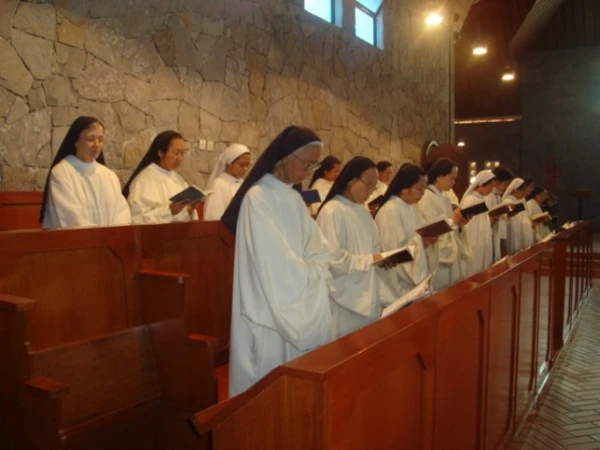
The nun urged people to pray together, read and discuss Scripture together, learn to listen to each other well, to forgive and ask forgiveness, and to foster unity in diversity: “It’s important to face the problems and ideologies of our times and make discernments based on faith together, seeking the will of the Father together.”
“That’s not just for religious communities, that’s for any community: For a family, a neighborhood community, or in the parish,” she noted.
“We’re all members of the body of Christ.”






